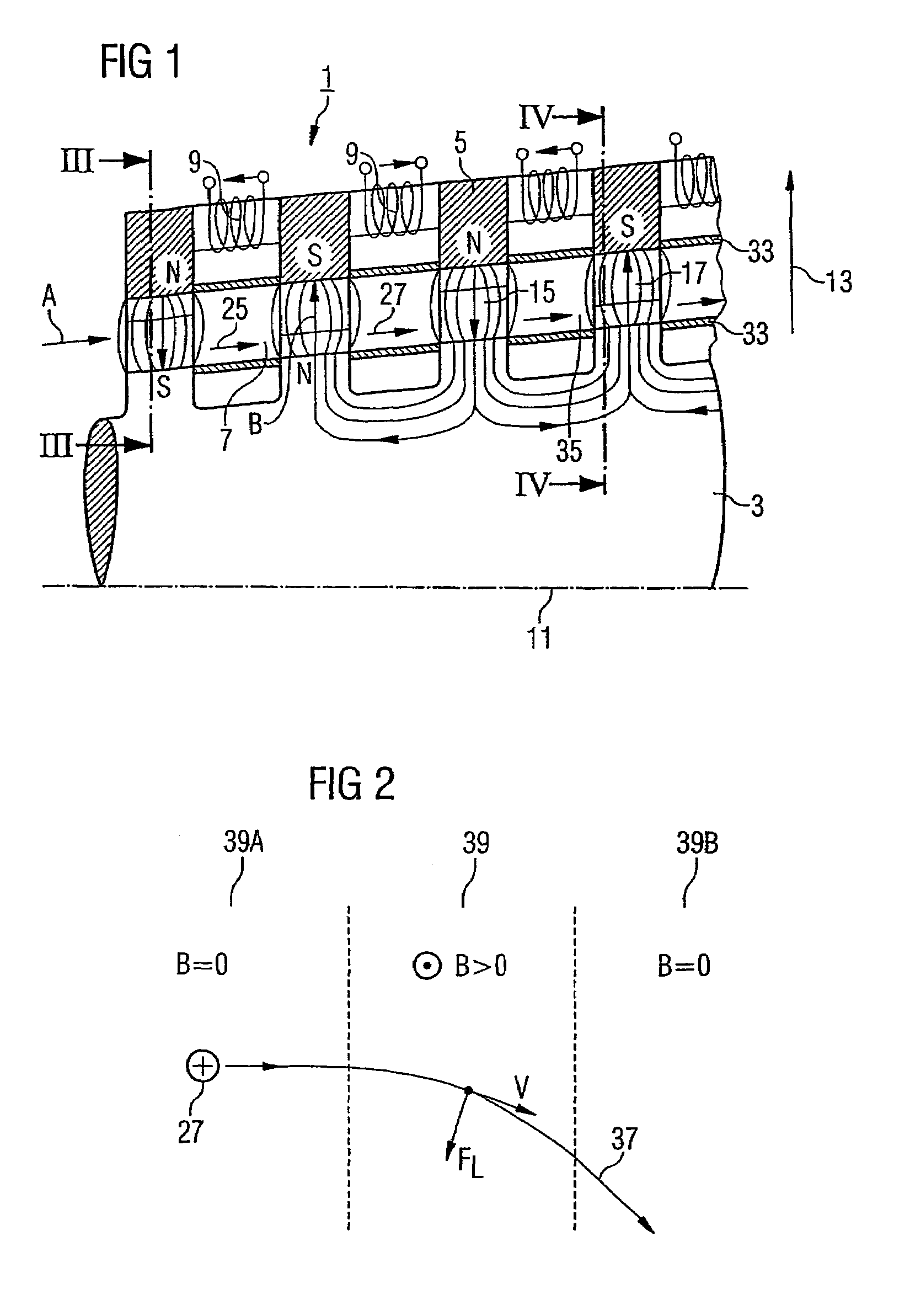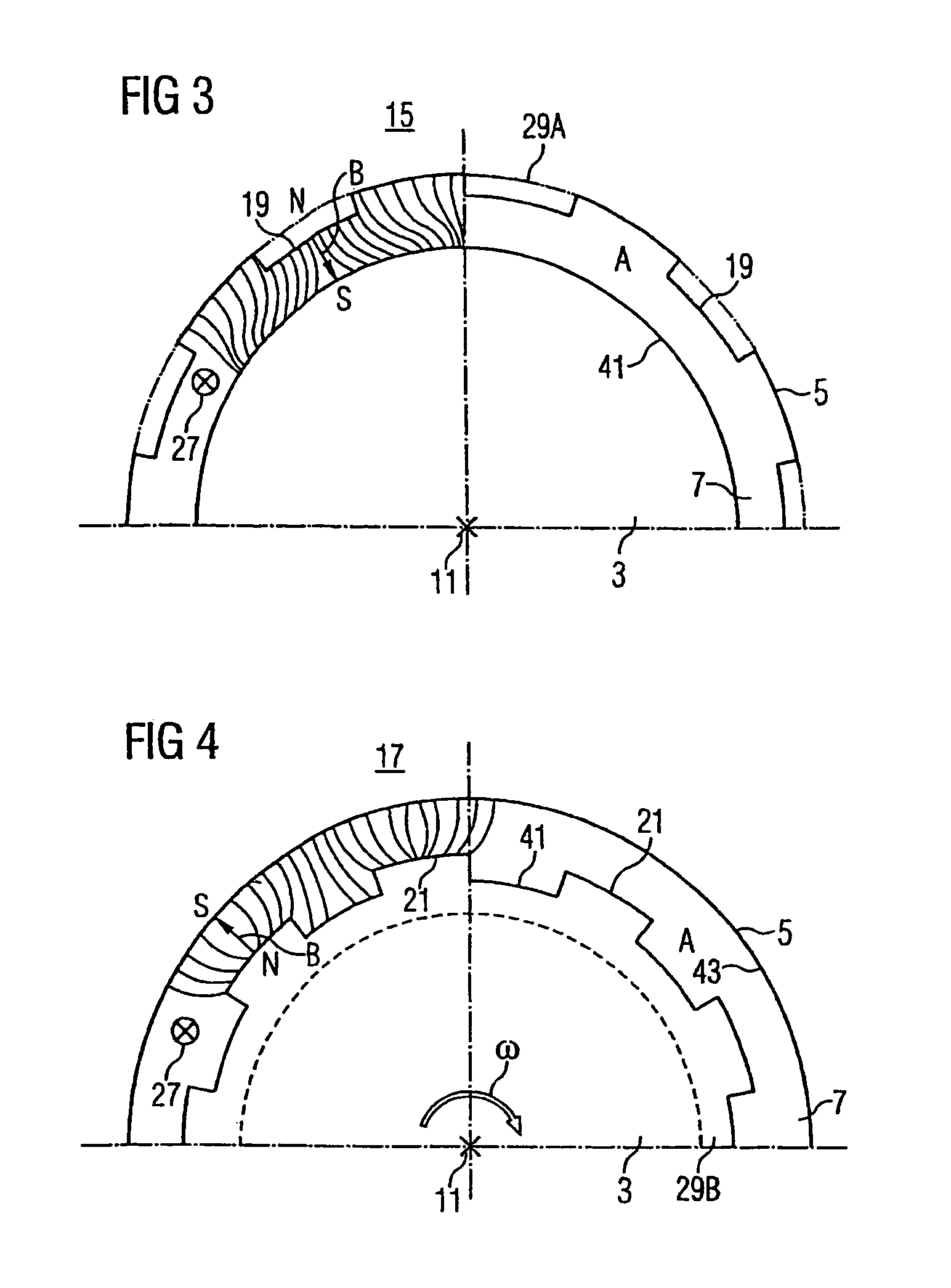Turbo-machine and method for operating the same
a technology of turbines and motors, applied in the direction of machines/engines, nuclear engineering, positive displacement liquid engines, etc., can solve the problems of secondary losses, inability to achieve optimal homogeneous deflection of action fluids, and need a considerable cooling requirement, so as to avoid specific disadvantages of mhd power station concepts, increase the thermal efficiency of turbines, and high process temperatures
- Summary
- Abstract
- Description
- Claims
- Application Information
AI Technical Summary
Benefits of technology
Problems solved by technology
Method used
Image
Examples
Embodiment Construction
[0058]FIG. 1 shows a detail of a turbomachine 1 which operates according to a magnetohydrodynamic principle. For this purpose, the turbomachine 1 has a rotor 3 extending along an axis of rotation 11. A stator 5 surrounds the rotor 3, so as to be spaced apart concentrically from the latter, over the entire circumference, thus forming an annular axial flow duct 7, to which an ion-containing action fluid A, for example an ion-containing steam or a gas, can be supplied. The rotor 3 can be driven by the action fluid A when the latter flows through the flow duct 7, magnetic deflection effects on charged particles 25, in particular on ions 27, being utilized in an accurately directed manner in the action fluid A.
[0059]For this purpose, the turbomachine 1 has a magnet 9 for generating a predeterminable magnetic field B in the flow duct 7. The magnet 9 is integrated fixedly into the stator 5 and, for example, may be configured, as shown, as a magnet coil, the desired magnetic field B in the ...
PUM
 Login to View More
Login to View More Abstract
Description
Claims
Application Information
 Login to View More
Login to View More - R&D
- Intellectual Property
- Life Sciences
- Materials
- Tech Scout
- Unparalleled Data Quality
- Higher Quality Content
- 60% Fewer Hallucinations
Browse by: Latest US Patents, China's latest patents, Technical Efficacy Thesaurus, Application Domain, Technology Topic, Popular Technical Reports.
© 2025 PatSnap. All rights reserved.Legal|Privacy policy|Modern Slavery Act Transparency Statement|Sitemap|About US| Contact US: help@patsnap.com



